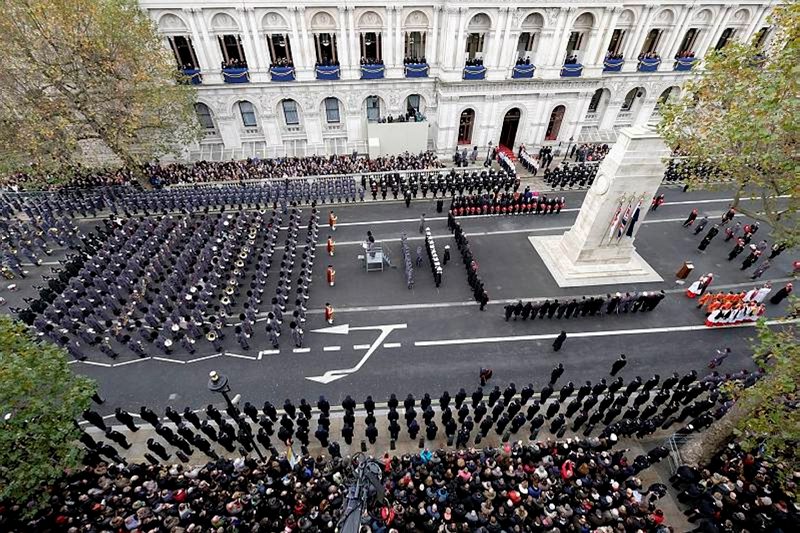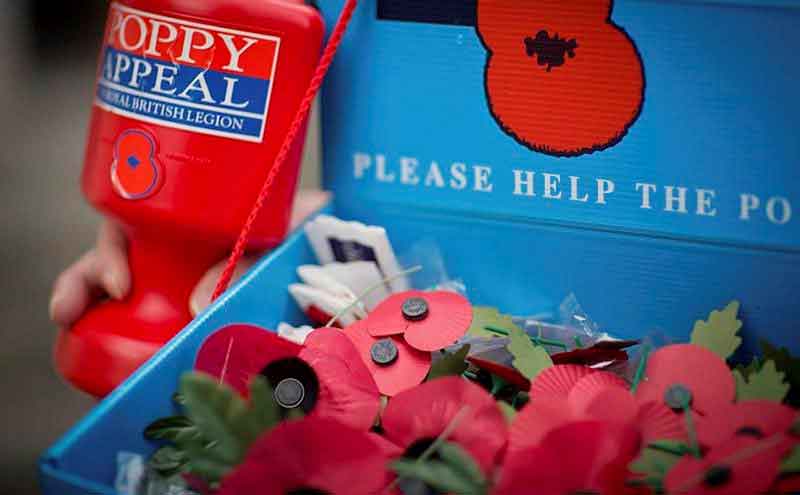

The National Service of Remembrance which commemorates British and Commonwealth servicemen and women who paid the ultimate price to protect our freedom takes place in November at the Cenotaph in Whitehall.
His Majesty The King, accompanied by other members of the Royal Family will be at the Cenotaph in Whitehall where, along with other members of state and dignitaries from the Commonwealth Nations he, will lay a wreath on behalf of the nation to commemorate the fallen.
Remembrance Sunday falls on the Sunday closest to the 11 November which is when the Armistice to start a ceasfire on the 11th hour of the 11th day of the 11th month brought an end to four years of war.
The National Service of Remembrance is open to the public and no passes or tickets are required.

Photographer: Staff Sgt Adrian Harlen
There are video screens north of the Cenotaph, near the green outside the main Ministry of Defence building, and outside the Scotland Office.
Temporary public toilets will be located in Whitehall Place. First aid facilities, provided by St John’s Ambulance, will be available at various locations along Whitehall, whilst their personnel will also be patrolling the area.
A space will be available for wheelchair users and other spectators who might find it difficult to view from the general public areas. This area is located on the west side of Parliament Street, close to the junction with King Charles Street.
Space in this enclosure will be offered on a first come, first served, basis only. One carer or guest per person will also be admitted and a toilet for the use of disabled people will be available nearby.
Photography is permitted, but the Police will remove obstacles, such as camera tripods, if they obstruct public access or views.
Photography is not allowed during the two-minute silence "when shutter noises can offend".

The significance of the Poppy as a lasting memorial symbol to the fallen was realised by the Canadian surgeon John McCrae in his poem In Flanders Fields.
The poppy came to represent the immeasurable sacrifice made by his comrades and quickly became a lasting memorial to those who died in World War One and later conflicts.
The poppy was adopted by The Royal British Legion as the symbol for their Poppy Appeal, in aid of those serving in the British Armed Forces, after its formation in 1921.
By Major John McCrae – 1915 - Boezinge
In Flanders fields the poppies blow
Between the crosses, row on row,
That mark our place; and in the sky
The larks, still bravely singing, fly
Scarce heard amid the guns below.
We are the Dead. Short days ago
We lived, felt dawn, saw sunset glow,
Loved, and were loved, and now we lie
In Flanders fields.
Take up our quarrel with the foe:
To you from failing hands we throw
The torch; be yours to hold it high.
If ye break faith with us who die
We shall not sleep, though poppies grow
In Flanders fields.